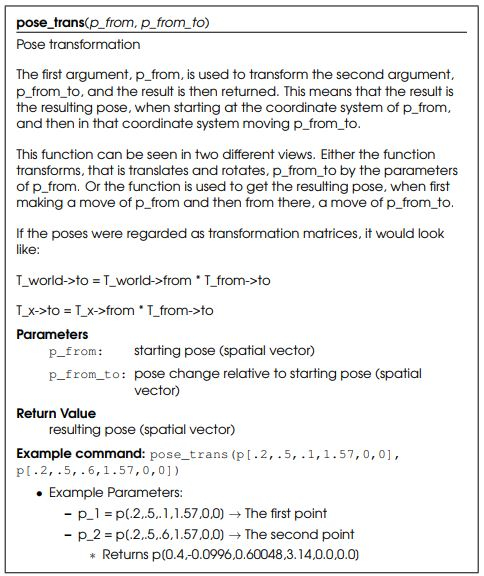https://www.universal-robots.com/how-tos-and-faqs/faq/ur-faq/explanation-on-robot-orientation-28126/

The Dof Community was shut down in June 2023. This is a read-only archive.
If you have questions about Robotiq products please reach our support team.
If you have questions about Robotiq products please reach our support team.
Hello guys,
i am currently working on a UR5e (Universal Robots) where I have created a C# program that reads a list of drillings (up to 600 per file) transforms them and sends them in script language to the UR5e via socket ethernet connection. Everything works fine, except for the performance of the UR5e which seems to reach its limits as it is needed to use 8 pose_trans() script functions per drill. I have contacted the Universal Robots support already and they recommended to do the calculations done by the pose trans() script function in my C# program. The function has got 2 inputs, one for the starting position of the tool, and the second one for the distance covered relative to the starting position. The output is defined as the target position, after the distance has been covered.
In order to do the calculations of the pose_trans() function in my C# program i need to know the algorithm behind it. However, so far I was not successfull searching on the zacobria and universal robots forums so far. If somebody faced a similar problem already and knows the algorithm behind this function, it would be very helpful to me.
Best regards